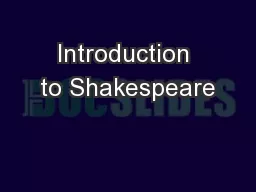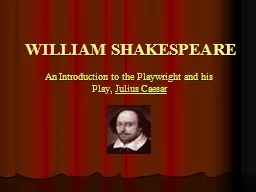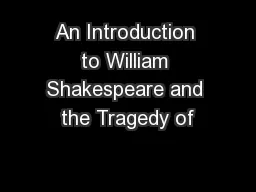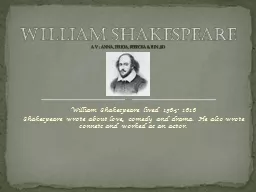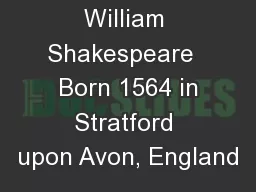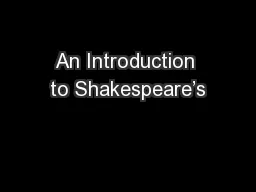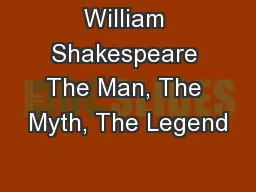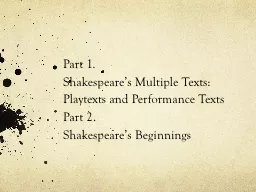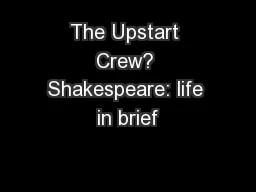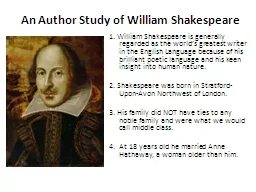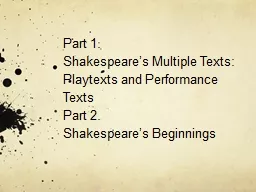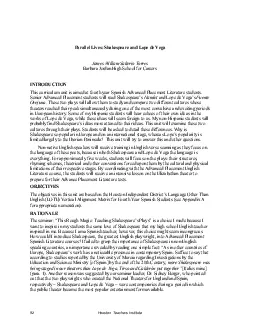PPT-Language in Shakespeare
Author : myesha-ticknor | Published Date : 2017-08-14
There are three types of language Rhyming Verse Blank Verse Prose Rhyming Verse RHYMES It USUALLY but not always has 10 syllables per line in the form known as
Presentation Embed Code
Download Presentation
Download Presentation The PPT/PDF document "Language in Shakespeare" is the property of its rightful owner. Permission is granted to download and print the materials on this website for personal, non-commercial use only, and to display it on your personal computer provided you do not modify the materials and that you retain all copyright notices contained in the materials. By downloading content from our website, you accept the terms of this agreement.
Language in Shakespeare: Transcript
Download Rules Of Document
"Language in Shakespeare"The content belongs to its owner. You may download and print it for personal use, without modification, and keep all copyright notices. By downloading, you agree to these terms.
Related Documents


